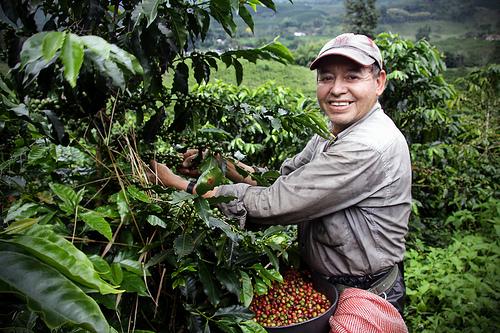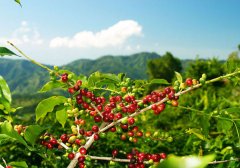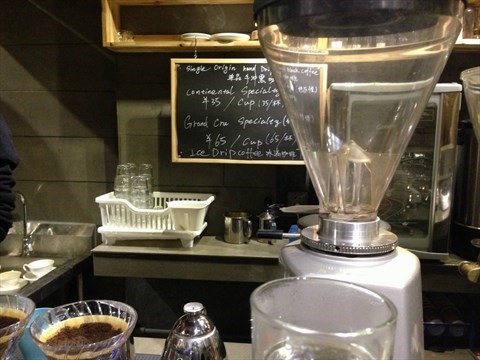African boutique coffee manor Sidamo Coffee Flavor washing Sidamo Coffee Flavor
Sidamo is a famous boutique coffee region in southern Ethiopia, bordering Kenya. Sitama treated by washing is light green, small beans, oval growth, full fruit, good average quality, mellow smell, a drop of mouth, endless aftertaste, with wild beauty.
Sidamo coffee has a wide variety of flavors, with different soil types, microclimates, and countless native coffee species creating significant differences and characteristics in the coffee produced in the town. From 2010 to 2012, it won high scores of CR92~94 from the authoritative coffee evaluation website in the United States. This shows that the production of raw beans extraordinary. High mountains, highlands, plateaus, valleys and plains, terrain diversity. The geology is fertile, well-drained volcanic soil, nearly two meters deep, and the topsoil is dark brown or brown. Its greatest advantage is that soil fertility is maintained through the recycling of organic matter, using withered leaves from surrounding trees or plant roots as fertilizer.
Unlike most African coffees, sidamo has a clear acidity, a smooth texture, and a delicate floral aroma. Washed Sidamo is elegant and playful. The palate is mild and pleasant, with a strong impact of bright lemon acids later. The palate is unique and mellow, with a sweet and pleasant finish that rises slowly and contains unique sweetness. Green coffee beans are slightly gray, some places coarse and some places fine, acidity is soft and strong, alcohol density is appropriate, sweet and spicy, is one of the courtyard coffee in the southern highlands of Ethiopia.
Arabica coffee trees still grow wild in large numbers in many parts of Ethiopia, averaging 4,200-6,800 feet above sea level. There is a trend towards small cultivation, usually with banana trees for shade, but due to lack of agricultural technology, herbicides and pesticides are used less.
Coffee is Ethiopia's main cash crop and the country's largest crop export and important industry, accounting for 60% of Ethiopia's total exports and supporting many small farms, as well as sugar, bananas, and cotton. it is also ethiopia's largest and most important commodity export crop after oil, and the largest african arabica seed export crop, with a total value of about us $300 million in 1997. in terms of total production, 94% is produced by small farms and 6% by government agencies, because many farms are scattered and also grow other crops, so it is difficult to accurately integrate the exact figures, but the country's official statistics show that the total coffee cultivation area is at least 400000 hectares. The Ethiopian government encourages local farmers to improve quality and productivity so that coffee farmers can expand their businesses, increase production capacity and export.
During harvest, farmers harvest bright red fruits every day, every two days into a unit of coffee fruit sent or sold to the washing plant treatment, not through the water treatment plant coffee fruit will usually be about 12 hours of natural fermentation, and then through the sun, so that drying and shelling, in any case, a little able farmers always try to send to the water treatment plant treatment, in order to crown "washing treatment" name and sell better prices, in the washing plant, Coffee cherries after about 12 hours of soaking fermentation to soften the pulp, and then through the channel and stir, so that the pulp and coffee beans separated, pulp with the gate discharge, and coffee beans need six days of sunlight drying treatment, but the treatment time is only sunrise to 11:00 a.m., and 03:00 p.m. to sunset, the finished green beans moisture content should be about 12%~12.5%; in the selection of residual beans or inferior beans, packed in sacks and trucks sent to the capital Addis Ababa coffee auction house.
There are many water treatment plants along the main roads of coffee producing areas, especially in the Gima region. Many treatment plants are underutilized because of fierce competition, so the managers of treatment plants pay higher prices to farmers because of this, but they are worried about whether they can make a profit. Nowadays, a kilogram of raw beans usually sells for about 2 Birr (Ethiopian units); The daily capacity of each plant is approximately ten bags per day for two months of continuous work by plant employees without rest days throughout the harvest period.
There is a growing trend towards washing plants in Ethiopia. Smallholders sell their harvested coffee to plants, shell it and resell it to auction systems, then transfer it to the Red Sea ports of Eritrea Assab and Djibouti near the Gulf of Aden. Although coffee is the country's main agricultural export, its annual consumption is staggering, accounting for about 1500000bags/60kg, accounting for 50% of total production. Wild coffee grows in the tropical rain forest of the southwest plateau, and most of them are hand-picked, but because of this, many local people have maliciously destroyed the naturally formed rainforest areas-or cut down or burned them to facilitate access to the rugged mountain areas, but they have seriously affected the ecological balance.
Whether washed or sun-dried, all exported coffee is sent to the capital city of Addis Ababa and the DIREDAWA auction outlet in Harrah province. DIREDAWA auction center usually exports sun-dried coffee from this area. Information on coffee from different farms can be seen daily in the auction hall to facilitate the acquisition of traders. Several officials from Ethiopia also enter this center daily to inspect and grade the coffee. Each time, the same batch of raw beans is randomly sampled for inspection.
Recommended item: SidamoWashedG2
Country: Ethiopia Fiscal year: 2003
Grade: G2
Production area: West Dharma production area
Treatment method: washing
Breed: Heirloom
Flavor: Wild ginger flower, honey, citrus, lemon

Important Notice :
前街咖啡 FrontStreet Coffee has moved to new addredd:
FrontStreet Coffee Address: 315,Donghua East Road,GuangZhou
Tel:020 38364473
- Prev

Full of Flower scent of Sidamo-90+Ninety plus Flower language treatment of Ethiopian Sidamo Honey
Ethiopia is the birthplace of coffee. Ethiopian coffee has the same deep cultural accumulation as Chinese tea. Ethiopian coffee is called the coffee of the wilderness, and a cup of Ethiopian coffee can bring you a primitive experience you've never had before. Ethiopia has unique natural conditions suitable for growing all imaginable varieties of coffee. Ethiopian coffee according to the above
- Next

How to adjust the Italian coffee grinder to understand the importance of the electronic control of the grinder and the ordinary grinder
The importance of the bean grinder: the bean grinder is often directly ignored in coffee recruits! This is a really sad fact! Many novices buy coffee powder directly in the supermarket. But friends with a little common sense will know that the shelf life of coffee after roasting is very short. It is generally recommended that freshly baked beans should be drunk within 1 month! Because in a month, in the beans,
Related
- Does Rose Summer choose Blue, Green or Red? Detailed explanation of Rose Summer Coffee plots and Classification in Panamanian Jade Manor
- What is the difference between the origin, producing area, processing plant, cooperative and manor of coffee beans?
- How fine does the espresso powder fit? how to grind the espresso?
- Sca coffee roasting degree color card coffee roasting degree 8 roasting color values what do you mean?
- The practice of lattes: how to make lattes at home
- Introduction to Indonesian Fine Coffee beans-- Java Coffee producing area of Indonesian Arabica Coffee
- How much will the flavor of light and medium roasted rose summer be expressed? What baking level is rose summer suitable for?
- Introduction to the characteristics of washing, sun-drying or wet-planing coffee commonly used in Mantenin, Indonesia
- Price characteristics of Arabica Coffee Bean Starbucks introduction to Manning Coffee Bean Taste producing area Variety Manor
- What is the authentic Yega flavor? What are the flavor characteristics of the really excellent Yejasuffi coffee beans?

